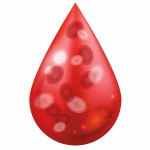Rapid progression of liver disease shortly after becoming infected with hepatitis C virus (HCV), has been documented in a group of HIV-positive gay men, according to a study published in the September 1 issue of The Journal of Infectious Diseases.
When it comes to HIV and HCV coinfection, it matters which virus is contracted first. Researchers believe that most people coinfected with both viruses first contract HCV, followed by HIV. In such cases, the progression to serious disease requiring a liver transplant can take 20 or more years. Conversely, in people infected with HCV after they’ve experienced immune suppression due to HIV, progression to serious liver disease can occur in as little as three years.
Recently, there have been reports in Europe and the United States of clusters of HIV-positive gay men becoming infected with HCV. Though the routes of HCV transmission are not entirely clear, common elements among the men who became infected include unprotected anal sex, the use of club drugs, the presence of genital piercings, and rougher sex play such as fisting.
To evaluate possible transmission routes of HCV in HIV-positive men and the impact of HCV on the health of the liver during the initial weeks and months after infection, researchers from Mount Sinai School of Medicine in New York City began looking for signs of recent HCV infection in their HIV-positive patients. Under the direction of Daniel Fierer, MD, the researchers found 11 HIV-positive gay men who had signs of early HCV infection, including documented seroconversion from negative to positive on an HCV antibody test, extremely high liver enzyme levels and wildly fluctuating levels of HCV in the blood.
All of the men were first identified as having a possible recent HCV infection because of a sudden rise in the liver enzyme alanine aminotransferase (ALT). They ranged in age from 31 to 56 years old and had been HIV positive for between 9 months and 16 years. Ten reported unprotected anal sex, often with a number of men in the recent past, and three reported injecting methamphetamine.
Dr. Fierer’s team conducted liver biopsies on all the men to determine the extent of liver damage, known as fibrosis, which is given a score ranging from 0 for no damage up to 4 for end-stage liver disease. The biopsies were generally conducted within one year of the suspected HCV infection. Nine of the men had a fibrosis score of 2 at their first liver biopsy, indicating rapid progression of liver disease.
Though regular and routine screening for HCV antibodies are not currently a recommended part of general HIV care, the authors propose that such screening may be helpful in early identification of HCV infection in gay male patients. This would not only help identify outbreaks of HCV infection, but also allow for aggressive early treatment.
Advertisement
Advertisement
Advertisement






1 Comment
1 Comment